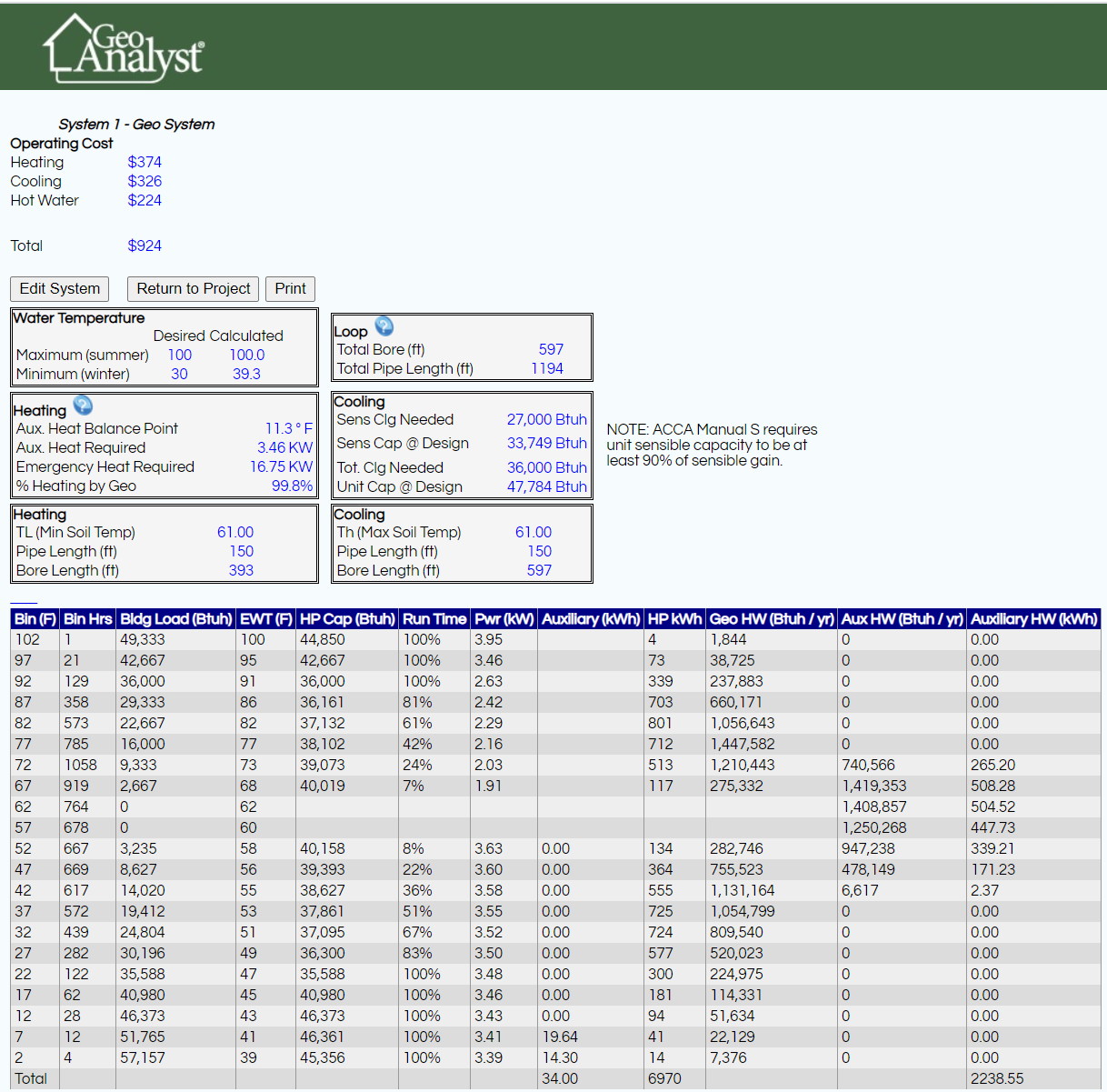1.Select the loop type from the drop down box. A variety of pre-configured loop types may be selected (a vertical loop is shown on the screen below), or a user-defined horizontal loop may be entered if one of the pre-configured loops is not representative.
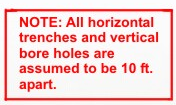
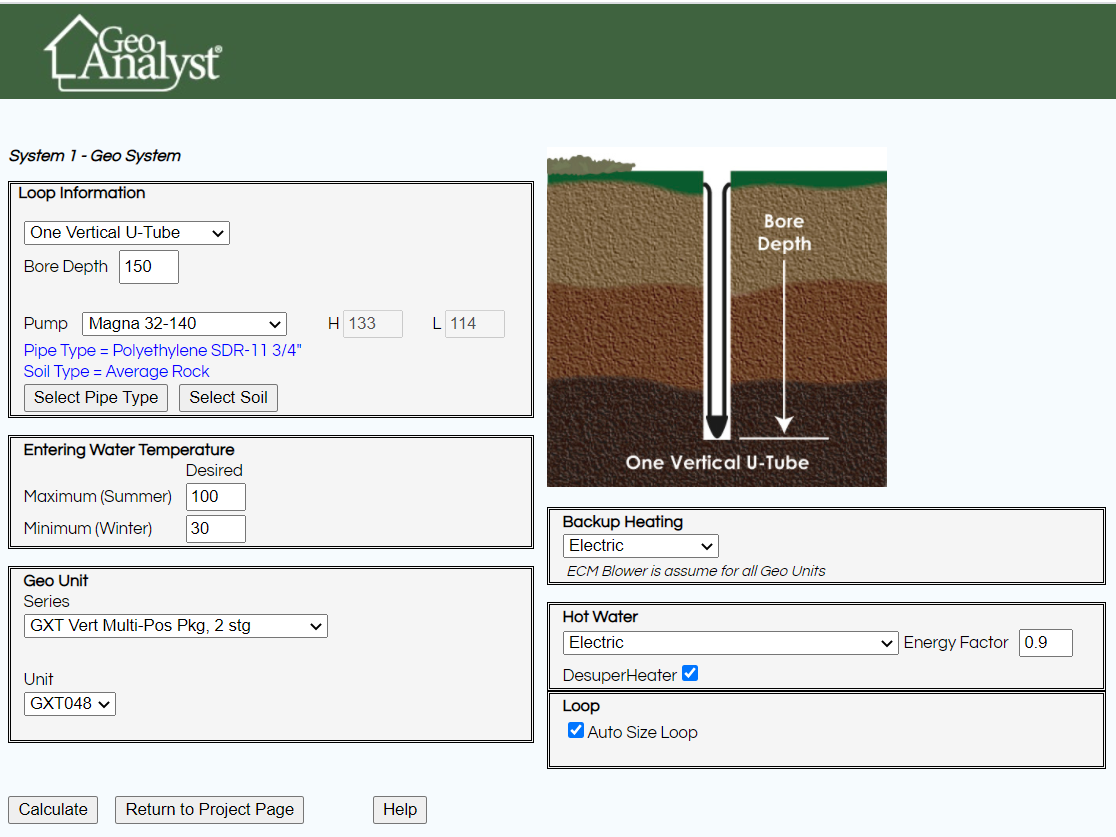
2.Enter the bore (vertical loops) depth or trench (horizontal loops) depth.
3.Select the pump(s) that will be used. If the combination of pumps is not shown, the user may select “User Specified Watts.”
4.Click on the “Select Pipe Type” button, and select the appropriate pipe to be used in the ground loop. “Specify,” allows the user to input pipe specifications if one of the pre-configured choices is not appropriate.
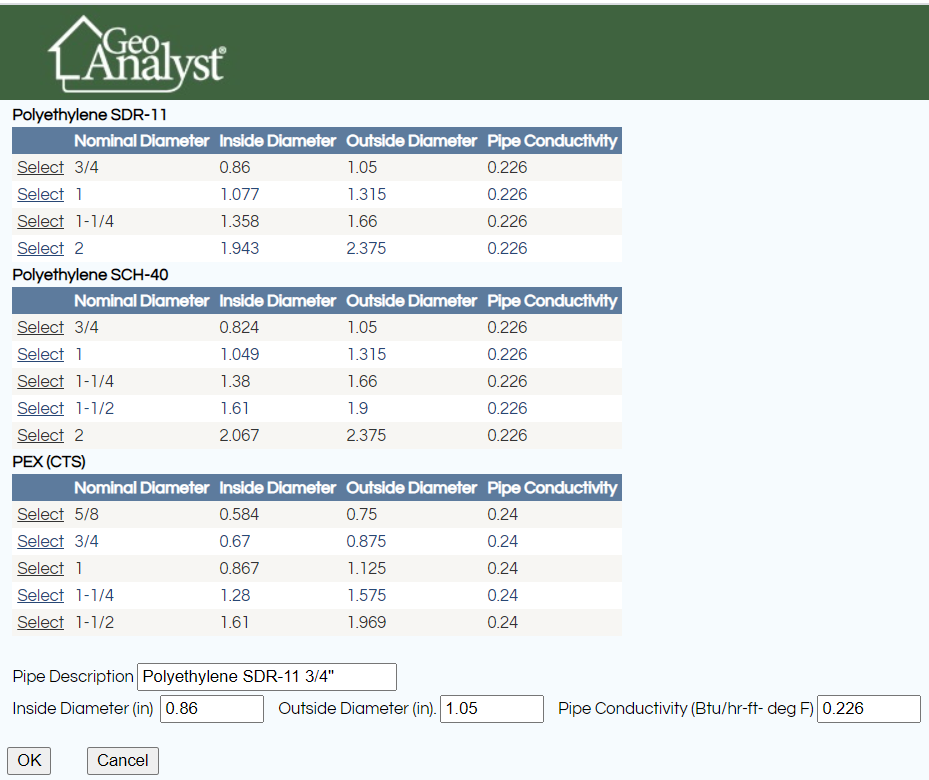
5.Click on the “Select Soil” button, and select the soil for which the ground loop will be designed. Some soils are more typical for certain types of loops as shown in the table below. There is also a “Specify” choice, which if selected, will allow the user to enter the thermal conductivity and thermal diffusivity for soils not shown in the pre-configured list. This is particularly useful for thermally enhanced grouting material that may be used in some vertical loop applications. The run hours for most residential applications should be set to 300 hours based upon typical minimum-maximum equipment and loop sizing. The run hours are a monthly estimate of contiguous run time in the design month, and will vary based upon heat pump sizing. Contact technical services before changing the run hours to make sure that the loop will not be sized incorrectly.
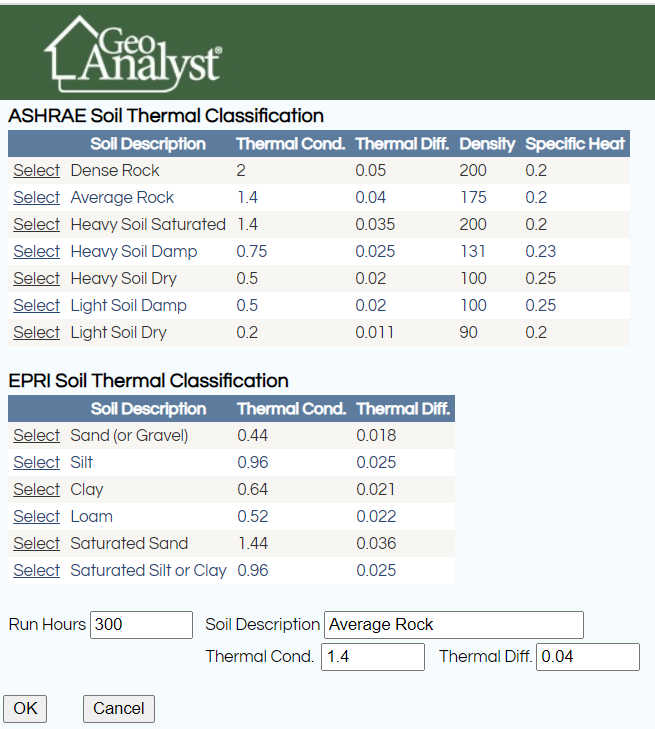
Horizontal Loops |
||||
Soil Type |
Cond |
Diff |
Description |
Occurrence |
Dense Rock |
2.00 |
0.050 |
Dense/wet granite, limestone, and quartzite |
Not possible |
Average Rock |
1.40 |
0.040 |
Typical granite, limestone, and sandstone |
Not possible |
Heavy Soil Saturated |
1.40 |
0.035 |
Mostly sand and gravel - high static water table; water standing in trench throughout the year |
Somewhat Rare |
Heavy Soil Damp |
0.75 |
0.025 |
Silt or clay - deeper static water table; no water in trench except during spring (moist soil) |
Very Common |
Heavy Soil Dry |
0.50 |
0.020 |
Silt or clay with very little moisture throughout the year; no water in trench throughout the year |
Rare |
Light Soil Damp |
0.50 |
0.020 |
Coarse-textured soil that drains rapidly - deeper static water table; soil is damp, but no water in the trench throughout the year |
Rare |
Light Soil Dry |
0.20 |
0.011 |
Coarse-textured soil that drains rapidly - very little moisture throughout the year |
Extremely Rare |
Sand (or Gravel) |
0.44 |
0.018 |
Sand or gravel with very little moisture throughout the year |
Extremely Rare |
Silt |
0.96 |
0.025 |
Silt - deeper static water table; no water in trench except during spring (moist soil) |
Common |
Clay |
0.64 |
0.021 |
Clay - deeper static water table; no water in trench except during spring (moist soil) |
Common |
Loam |
0.52 |
0.022 |
Equal proportion of sand/silt; not more than 20% clay |
Somewhat Rare |
Saturated Sand |
1.44 |
0.036 |
Sand or gravel/sand - high static water table; water standing in trench throughout the year |
Somewhat Rare |
Saturated Silt or Clay |
0.96 |
0.025 |
Silt or clay - high static water table; water standing in trench throughout the year |
Somewhat Rare |
Vertical Loops |
||||
Soil Type |
Cond |
Diff |
Description |
Occurrence |
Dense Rock |
2.00 |
0.050 |
Dense/wet granite, limestone, and quartzite |
Rare |
Average Rock |
1.40 |
0.040 |
Typical granite, limestone, and sandstone |
Very Common |
Heavy Soil Saturated |
1.40 |
0.035 |
Mostly sand and gravel - high static water table, for 70% of the installed loop |
Common |
Heavy Soil Damp |
0.75 |
0.025 |
Silt or clay - deeper static water table, for 30% or less of the installed loop |
Somewhat Rare |
Heavy Soil Dry |
0.50 |
0.020 |
Silt or clay with very little moisture throughout the year |
Extremely Rare |
Light Soil Damp |
0.50 |
0.020 |
Coarse-textured soil that drains rapidly - deeper static water table, for 30% or less of the installed loop |
Extremely Rare |
Light Soil Dry |
0.20 |
0.011 |
Coarse-textured soil that drains rapidly - very little moisture throughout the year |
Extremely Rare |
Sand (or Gravel) |
0.44 |
0.018 |
Sand or gravel with very little moisture throughout the year |
Extremely Rare |
Silt |
0.96 |
0.025 |
Silt - deeper static water table, for 30% or less of the installed loop |
Somewhat Rare |
Clay |
0.64 |
0.021 |
Clay - deeper static water table, for 30% or less of the installed loop |
Somewhat Rare |
Loam |
0.52 |
0.022 |
Equal proportion of sand/silt; not more than 20% clay |
Somewhat Rare |
Saturated Sand |
1.44 |
0.036 |
Sand or gravel/sand - high static water table, for 70% of the installed loop |
Common |
Saturated Silt or Clay |
0.96 |
0.025 |
Silt or clay - high static water table, for 70% of the installed loop |
Somewhat Common |
See also Pond Loop Guidelines section
6.Select the unit series/model, backup type, and water heater type. There is also a checkbox for the desuperheater option if desired.
7.Click the “Calculate” button to review the equipment/loop sizing and operating costs.
